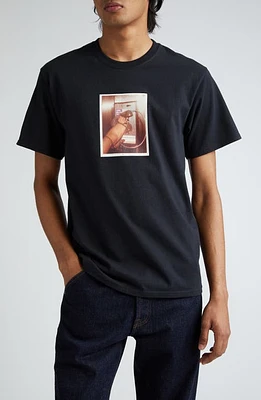Home
Antonio López García's Everyday Urban Worlds: A Philosophy of Painting
Barnes and Noble
Antonio López García's Everyday Urban Worlds: A Philosophy of Painting
Current price: $107.00


Barnes and Noble
Antonio López García's Everyday Urban Worlds: A Philosophy of Painting
Current price: $107.00
Size: Hardcover
Loading Inventory...
*Product information may vary - to confirm product availability, pricing, shipping and return information please contact Barnes and Noble
Antonio López García’s Everyday Urban Worlds: A Philosophy of Painting is the first book to give the famed Spanish artist the critical attention he deserves. Born in Tomelloso in 1936 and still living in the Spanish capital today, Antonio López has long cultivated a reputation for impressive urban scenes—but it is urban time that is his real subject.Going far beyond mere artist biography, Benjamin Fraser explores the relevance of multiple disciplines to an understanding of the painter’s large-scale canvasses. Weaving selected images together with their urban referents—and without ever straying too far from discussion of the painter’s oeuvre, method and reception by critics—Fraser pulls from disciplines as varied as philosophy, history, Spanish literature and film, cultural studies, urban geography, architecture, and city planning in his analyses.The book begins at ground level with one of the artist’s most recognizable images, the Gran Vía, which captures the urban project that sought to establish Madrid as an emblem of modernity. Here, discussion of the artist’s chosen painting style—one that has been referred to as a ‘hyperrealism’—is integrated with the central street’s history, the capital’s famous literary figures, and its filmic representations, setting up the philosophical perspective toward which the book gradually develops.Chapter two rises in altitude to focus on Madrid desde Torres Blancas, an urban image painted from the vantage point provided by an iconic high-rise in the north-central area of the city. Discussion of the Spanish capital’s northward expansion complements a broad view of the artist’s push into representations of landscape and allows for the exploration of themes such as political conflict, social inequality, and the accelerated cultural change of an increasingly mobile nation during the 1960s.Chapter three views Madrid desde la torre de bomberos de Vallecas and signals a turn toward political philosophy. Here, the size of the artist’s image itself foregrounds questions of scale, which Fraser paints in broad strokes as he blends discussions of artistry with the turbulent history of one of Madrid’s outlying districts and a continued focus on urban development and its literary and filmic resonance.Antonio López García’s Everyday Urban Worlds also includes an artist timeline, a concise introduction and an epilogue centering on the artist’s role in the Spanish film El sol del membrillo. The book’s clear style and comprehensive endnotes make it appropriate for both general readers and specialists alike.


















